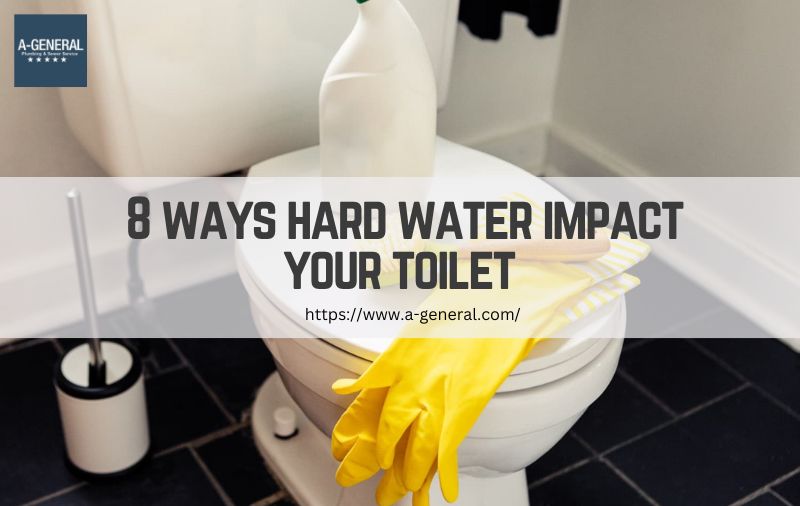Hard water is a reality everyone has to live with everywhere on the planet. It invariably happens when rainwater collects minerals, especially calcium and magnesium when it flows or stores in areas rich in these. Even though most municipal treatment plants try to filter out some quantities of these chemicals, copies quantities do get remain. It is these which trouble us in myriad ways. That said plumbers in toms river new jersey do have their age-old tried and tested ways to play the role of the drain doctor and get things back in shape.
Today we tell you eight reasons how hard water impact our toilets.
1. Mineral build-up
As mentioned hard-water is a surfeit of chemicals, and more so calcium and magnesium that if not treated the right way at the very origin lead to a mineral build-up in multiple places that include piping, heating element coating and a layer on practically all the plumbing and bath-and-kitchen fixtures. Of special significance is the water heating element. The thickest, toughest and most resistant to removal happens on the heating element thus reducing its efficiency drastically. The only solution for this is a treatment system at the origin.
2. Stains
Hard-water being heavy on minerals, it is most visible in the form of stains on bath and kitchen fixtures. For that matter, any and every surface that water touches is left with a tell-tale stain that is either translucent white or yellow. It is especially bothering given that its build-up starts to look increasingly hideous and makes surfaces look ugly. Beautifully done-up baths and kitchen are known to have been ruined by stains. Tom River plumbers known for their ingenuity best know how to treat such stains, given that solutions are quite a few and give just as varied outputs.
3. Reduced flushing power
One area where hard water goes beyond looks is in chocking the flushing systems of commodes. Forming layers in the tanks and cisterns it progressively reduces their capacity to a point where the only option is a complete replacement of the cistern/ tank. Any good drain doctor will tell you that the best way ahead is to install a water softener. They can also help you either change the cistern/ flush tank or reduce the flow of water to reduce further corroding.
4. Damage to toilet components
From the most visible ring on top of the commode to non-visible parts within the commode, the flush or the sink, everything is a great place for minerals to get deposited in copious quantities. Toilet component, and more so the flushing mechanism are very prone to being jammed with deposits. If you are a senior citizen, most senior discount plumbers in your area would tell you to immediately install a water softener or run the risk of completely spoiling your toilet.
5. increased cleaning needs
This is a no-brainer. With stains being visible on practically every surface in your toilet, it is an obvious that you spend much more to have them removed from time to time thus increasing your cleaning bills. The solution once again is the water softener which any plumber in toms river new jersey will tell you.
6. Flush rotation
Water rotates in the toilet bowl from holes provided in the cavity that forms part of the seat. If salts from water isn’t dealt with every now and then, it may clog these holes letting lesser and lesser water do the flushing. All this is a very unhygienic situation that can be rectified in two ways. Get a drain doctor and on the latter’s advice, install a hard-water softener system.
7. Flapper suction
A flapper is a mechanism in the toilet’s flush tank that helps drain water from the tank into the commode bowl. Heavy deposit of salts from hard water is known to clog the mechanism and reduce the suction action leading to the flush malfunctioning besides letting out lesser water. Solution may consist of two actions. Get a water softener installed. And get the deposits removed.
8. Refill tube clogging
Hard-water coating and clogging any surface, the source of water into the flushing cistern is always in danger of salt building up and reducing water available for flushing in the commode. The best (and only) solution available is to put in place a water softener + getting such impediments removed physically.
Hard-water is a natural phenomenon in all parts of the world. Besides affecting toilets and kitchens, it also affects people’s health in adverse ways, especially the skin and hair. In the end, a permanent solution is always the installation of a water softener. And that is best handled by the specialist, a plumbing doctor.

